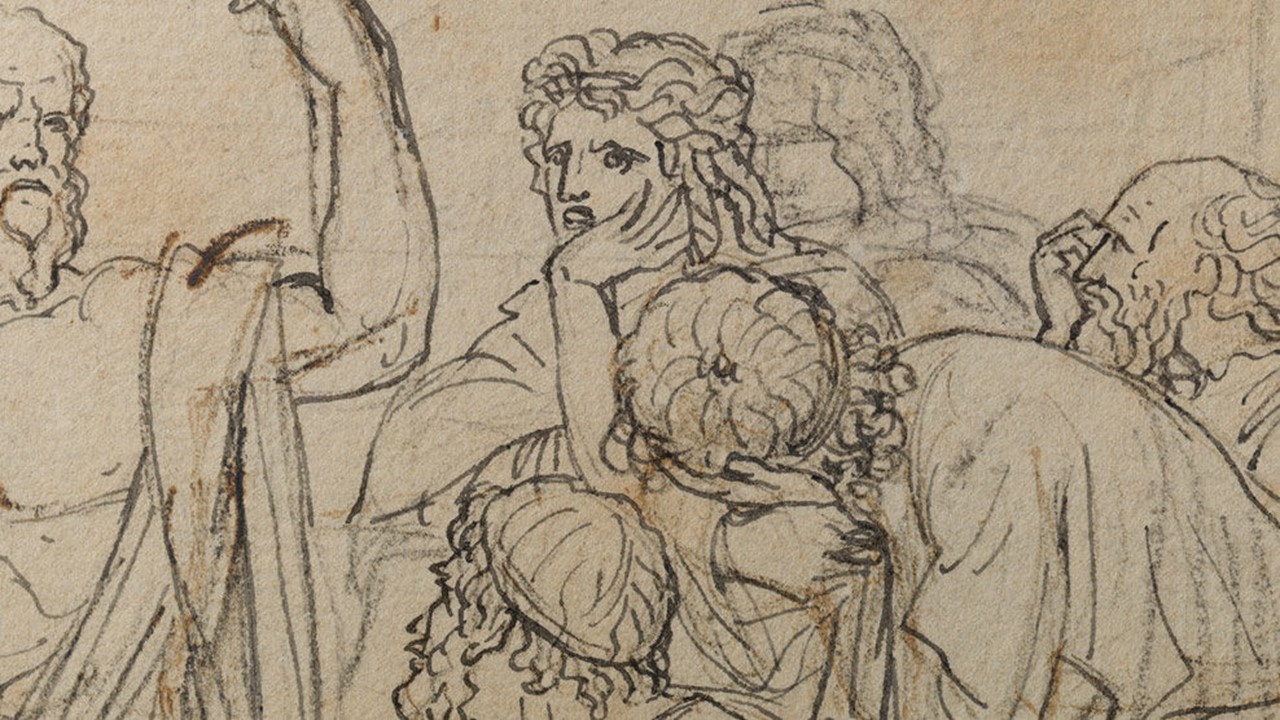
The Bastille in the first days of its Demolition, 1789, oil on canvas, 96×135 cm, Musée Carnavalet, Paris, France https://en.wikipedia.org/wiki/Hubert_Robert#/media/File:The_Bastille_in_the_first_days_of_its_demolition,_by_Hubert_Robert_(cropped).jpg
More than any other event of the eighteenth century writes Prof. Mircea Platon, the French Revolution, which began in 1789, changed the face of modern politics across Europe and the world. And it all began one July day when the people of Paris captured a fourteenth-century gothic prison known as the Bastille. The 14th of July is the anniversary of the Storming of the Bastille, a major event of the French Revolution, and the most important French Fête Nationale! Hubert Robert’s, painting of The Bastille in the first days of its Demolition shows us how important and hated Bastille was by the French Revolutionaries. https://origins.osu.edu/milestones/july-2014-storming-bastille?language_content_entity=en
In the summer of 1789, Paris was at a boil. In May, the Estates-General, France’s Parliament, met for the first time in more than one hundred years, but it was a failure. Members of the Third Estate broke ranks and declared themselves to be the National Assembly of the country. On the 20th of June 1789, they gathered in a tennis court near the royal palace and solemnly swore not to separate before having established a Constitution. There was more… heavy taxation, food shortage, army mobilization around Paris, and the dismissal of the popular minister Jacques Necker on the 11th of July. The political situation in Paris was explosive! https://www.carnavalet.paris.fr/collections/serment-du-jeu-de-paume-le-20-juin-1789 and https://origins.osu.edu/milestones/july-2014-storming-bastille?language_content_entity=en
Early on the 14th of July, the angry Parisian crowd besieged the Hôtel des Invalides where they looted approximately 3,000 firearms and five canons. The weapons, however, required gunpowder, which was stored in the Bastille. After arriving at the prison and negotiating with its governor, marchers burst into an outer courtyard and a pitch battle erupted. By the time it was over, the people of Paris had freed the prisoners held in the Bastille and taken Governor de Launay captive. All of this happened on July 14, which has been known in France and all over the world as “Bastille Day” ever since. Hearing that the Bastille had fallen, Louis XVI asked the duke de La Rochefoucauld: “So, is there a rebellion?” To which the duke retorted: “No, Sire, a revolution!” https://origins.osu.edu/milestones/july-2014-storming-bastille?language_content_entity=en
On July 15, 1789, the day after Bastille was captured by the angry Parisian crowd, its demolition was decided and entrusted to the contractor Pierre-François Palloy. It was an important decision the citizens of Paris wanted to remember! As workmen tore down the spires on the roof, ordinary people ripped stones off the base. These stones soon became collectors’ items, souvenirs of the people’s role in the outbreak of the Revolution. https://www.carnavalet.paris.fr/en/collections/bastille-early-days-its-demolition and https://revolution.chnm.org/d/17
One of the many artists who painted Bastille’s Demolition was Hubert Robert. Known for his capricci paintings, real or fictional compositions of contemporary buildings, and/or archaeological ruins, the artist was famous, popular, and prolific. His painting of Bastille’s Demolition presents a historic event. The medieval fortification is depicted as monumental in size, strong, and commanding. The dramatic use of chiaroscuro acquires a symbolic and meditative dimension. According to the Musée Carnavalet experts, the Bastille state prison symbolized absolutism and the monarchy. Hubert Robert’s painting of The Bastille in the first days of its Demolition encourages us to remember the stormy, and bumpy road toward representative democracy, and the noble ideas of liberty, equality, and fraternity. https://www.carnavalet.paris.fr/en/collections/bastille-early-days-its-demolition
Joyeux Quatorze Juillet à tous!
For a Student Activity, please… Check HERE!




